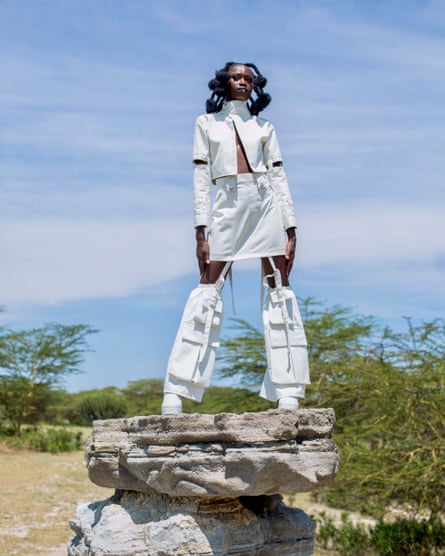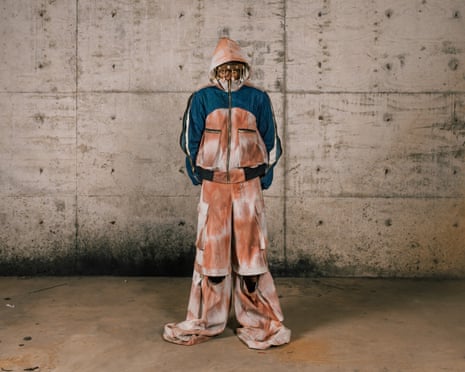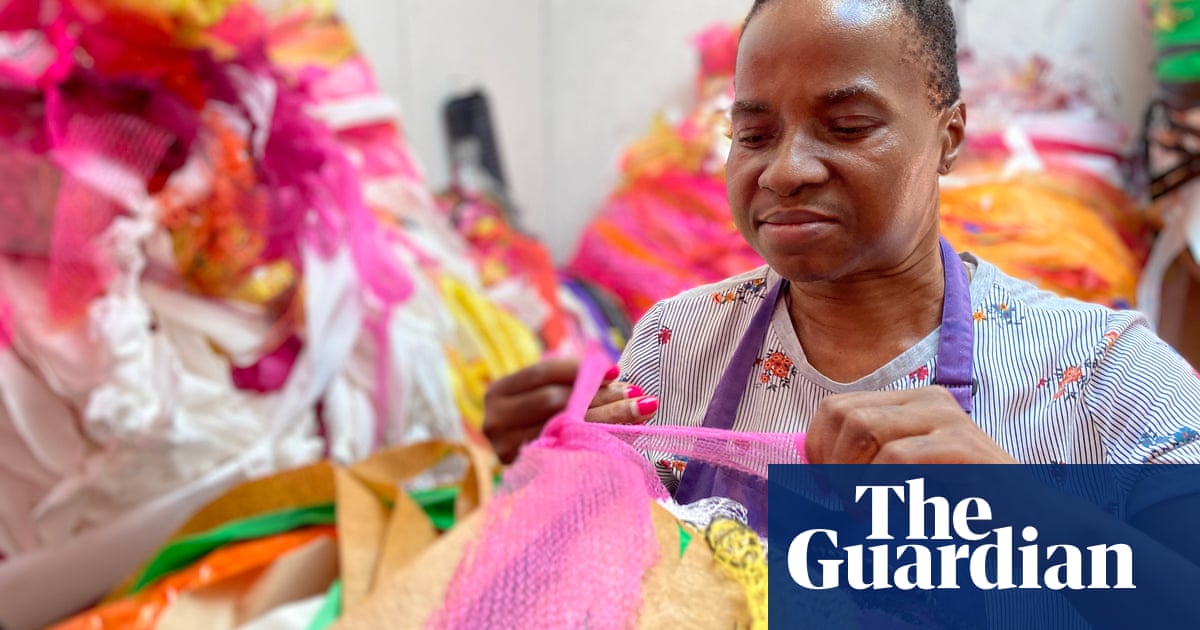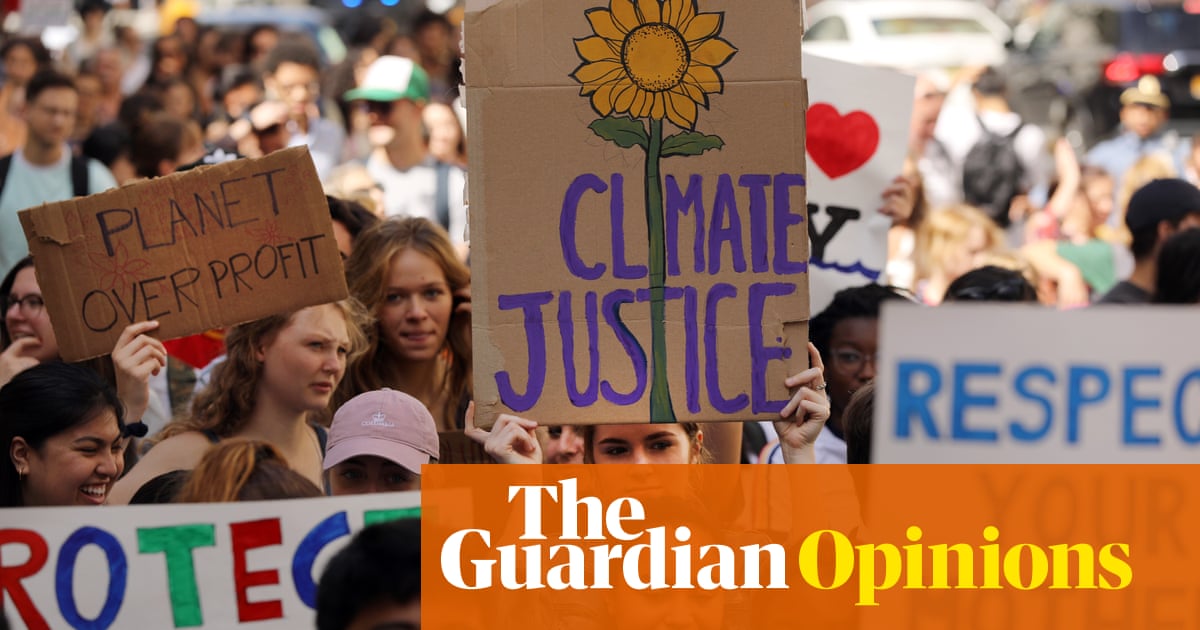From recycled wide-leg denims to Afrofuturistic designs made from secondhand curtains, the catwalk at Nairobi fashion week has featured a wave of new designers focussed on sustainable fashion in Africa.
The annual event, which began in 2013 to promote Africa’s then nascent fashion industry, has grown to become a showcase for sustainability in recent years amid concerning reports on the environmental impacts of textile waste on the continent.
Eco and culturally conscious brands, such as the Kenyan studio Maisha by Nisria, have shown collections this year. The label makes designs by hand from discarded textiles sourced at flea markets, wholesalers, recycling factories and landfill. One piece from its new Afropia collection, showing on Saturday, the last day of the event, is a cropped high-collar jacket and boxy miniskirt made from repurposed curtains.

“You can use anything and everything to make something interesting,” says Tausi Conde, the label’s head of design. Conde says he stumbled into sustainable fashion at university, when limited access to fabrics pushed him to get creative: repurposing his mum’s old clothes to design stylish outfits for student models. Today, it is an integral part of his brand. He and his team follow a strict zero-waste policy, leftover fabric is transformed into patchwork bags and accessories.
Sustainable fashion is about more than just being environmentally responsible, it’s about ethical sourcing and labour practices and passing on African cultural heritage through designs, according to designers showing their work.
The Rwandan designer Jean Maurice Niyigena, who runs the urban streetwear label Bone Koboyi, uses repurposed or recycled materials to make his range, working with local artisans to source and tailor the clothing. His new Exodus collection uses exaggerated silhouettes, from flared trousers to oversized pockets, and hand-painting inspired by traditional textile art. The pieces reflect the balance the designer straddles in his work, breaking away from restrictive conventions while honouring African culture and craftsmanship.
“It’s about innovating without fear, while remembering where you come from,” says Niyigena. “The [sustainable fashion] market is growing, especially among young conscious consumers who are more aware of environmental and social issues, and are looking for options that match their values and honour culture, and have global appeal.”

The Cameroonian designer Sikoti Mbaitjongue, who has showcased playful cotton pastel designs at the fashion week, says a big challenge she has faced running her Dakar-based label, Sokolata, since 2022 has been sourcing and processing raw cotton. While west Africa is a major producer of cotton, many countries on the continent export the bulk of the raw material, which is processed elsewhere and re-imported as fabric. With little left to meet national demand or support the growth of local textile industries, designers go to great lengths to find and make quality fabric. Mbaitjongue now imports cotton from Benin, but it affects the overall cost of her range, pricing many African consumers out.
“For [sustainable fashion] to become more accessible, our industries will need to deliver,” says Sikoti, whose permanent collections range mostly from £40 to £90. Her main clients are from the African diaspora and Senegalese expat communities.
“For now, sustainable fashion is not a sustainable business – we can’t compete with fast fashion. But as more of us [eco-conscious designers] come up, I’d like to see a future where it is,” says Conde.
Conveners of the fashion week are calling for policies across the continent that support designers and textile industries. While there is growing interest among emerging designers in sustainable fibres produced on the continent such as jute, kenaf and kapok, producing eco-friendly fashion has its challenges, such as competition from the influx of secondhand clothing from other countries that critics say is stifling the growth of local industries and causing irreversible environmental harm.
Studies on textile waste in Ghana suggest that up to 60% of the imported garments are found to be unsellable and end up in dump sites, gutters and open spaces. Nairobi fashion week organisers have also called for tighter regulations on imported garments.
Brian Kihindas, creative director of the Nairobi Fashion Week, convened a group of traders, consumers, designers and policymakers to discuss the issue over the week and make recommendations. “The quality [of second hand clothes] has been watered down, and that’s a textile waste issue,” he says.

.png) 2 months ago
40
2 months ago
40













































